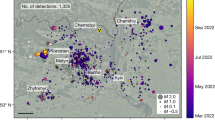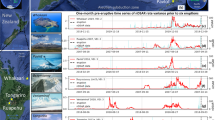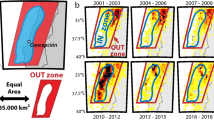Abstract
The Heligoland explosion of April 18, 1947, was planned by the Navy for the purpose of destroying the German fortifications on the island, and as a convenient method of disposing of surplus ammunition from the British zone of Germany. From the scientific point of view, it was realized that the detonation of some 4,000 tons of high explosive would provide an almost unique opportunity for the collection of seismic and meteorological data on a continental scale.
This is a preview of subscription content, access via your institution
Access options
Subscribe to this journal
Receive 51 print issues and online access
$199.00 per year
only $3.90 per issue
Buy this article
- Purchase on Springer Link
- Instant access to full article PDF
Prices may be subject to local taxes which are calculated during checkout
Similar content being viewed by others
References
Jeffreys, Mon. Not. Roy. Astro. Soc, Geophys. Supp. 5. 99 and 105 (1947).
Author information
Authors and Affiliations
Rights and permissions
About this article
Cite this article
WILLMORE, P. Seismic Aspects of the Heligoland Explosion. Nature 160, 350–351 (1947). https://doi.org/10.1038/160350a0
Issue Date:
DOI: https://doi.org/10.1038/160350a0
Comments
By submitting a comment you agree to abide by our Terms and Community Guidelines. If you find something abusive or that does not comply with our terms or guidelines please flag it as inappropriate.



